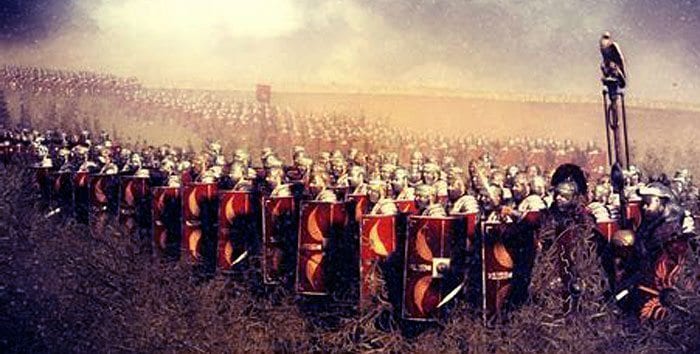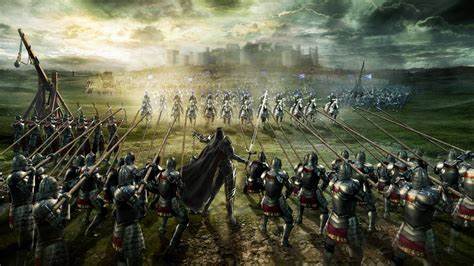The 30 Years' War

If thou regret’st thy Youth, why live? The land of honourable Death Is here:—up to the Field, and give Away thy breath! Seek out—less often sought than found— A Soldier’s Grave, for thee the best; Then look around, and choose thy Ground, And take thy rest.
- Lord Byron: On This Day I Complete My Thirty Sixth Year
For many, like Lord Byron, the battleground was a place of honour, veneration and noble death. For the plebeian, he or she, who dreads a military lifestyle, war is a grandiose theatre of massacre and mutilation, a speedy-boarding pass to the morgue. The first ‘great war’ was not WWI, nor the Napoleonic conquests in the dramatic theatre of war, nor was it Crimea, but the Thirty Years’ War.
The war lasted from 1618 to 1648, thirty years (unlike the 100 Years’ War which was not, in fact, one hundred years). When Habsburg Emperor Ferdinand II became head of state of the Holy Roman Empire in 1619, he forced all citizens to adhere to Roman Catholicism. This impacted a variety of different religious sects, from Lutherans to Calvinists to bog-standard Catholics to Jews to Muslims. No one was particularly chuffed, so the Bohemian nobility in Austria threw Ferdinand’s representatives out of a window at Prague Castle in 1618, known as the Defenestration of Prague. Whilst inventive, three people were thrown out and they all survived. Why? They landed in manure. yet the Bohemian rebels effectively started a war, and they had the backing of Sweden, Denmark and Norway.
In 1620 when Ferdinand II officially became Holy Roman Emperor, the Czechs rejected him as King instead opting for Ferdinand V of the Palatinate. They lost in 1620 at the Battle of White Mountain, but the war lasted much longer. The Bohemian states were primarily Protestant, and they sought to break away, kicking off the Bohemian Revolt. In the first decade, the Bohemian nobility formed alliances with the Protestant Union states, what is now Germany, and Ferdinand sought the support of King Phillip IV of Spain, his Catholic nephew. The armies clashed in Austria, Transylvania (where it was Ottomans and Bohemians vs Poles). In the west, the Spanish army aligned with the Catholic League, nation-states in present-day Germany, Belgium and France.

Initially Ferdinand II was successful, quelling rebellion sin the east and dissolving the Protestant Union. Yet, fighting continued in the west as Denmark, Norway and Scottish forces battled on, until they eventually fell, and Christian IV of Denmark lost half his army at the devastating Battle of Lutter in 1626 as Ferdinand II’s ally Albrecht Von Wallenstein truly began to enter the field. In the 1620s, Ferdinand II was wholly successful, confiscating land from his enemies and giving it to his allies, and even places where people had bought church land, these had to be returned. Thus began a refugee crisis.
But in 1630, the tide turned. Swedish King Gustavus Adolphus, which I have decided will be the future name of my child, lead Sweden into the fight with the Protestants, until he was killed at Lutzen in 1632. Yet, they regained much of the territory lost by the Protestant Union, which kept the Protestants going for a while – he did after all win their first battles. Albrecht Von Wallenstein (can’t pretend I like that name) had given his army of 50,000 soldiers to Ferdinand in exchange for freedom to plunder any captured territory, and went on to vanquish the Swedes. He was killed by Ferdinand II in 1634 because he was trying to become Holy Roman Emperor for some odd reason, wasn’t a glamorous job at the time. The fall of the Swedes in 1635 and collapsing governments led to the Peace of Prague, which protected the Lutheran and Calvinist rulers of northeastern Germany, but not those anywhere else.
It is only natural that the French decided that it was time to get involved. Despite being Catholic, they weren’t such a fan of the Habsburgs and didn’t much like the Peace of Prague. So, they tried to “do good battle” as a Sans-Culottes might say (I’m not a fan of the French if you couldn’t tell), but failed pretty much, even after Ferdinand died in 1637 of old age. He was replaced by his son Ferdinand III, and later Leopold I, and hey instructed Spain to counter-attack, and in true Jose Mourinho fashion threatened Paris in 1636. But, the French did not retreat! Instead, they forced a stalemate for a couple years. Nothing like the French trying to be lazy and forcing inaction.
In 1640, the Portuguese began to revolt against their Spanish rulers, weakening their military efforts, and then the Swedes entered the war in 1642. The tides were turning, although Jose was not the mastermind this time. In 1643, Denmark-Norway joined too, though they now decided to back the Habsburgs and the Holy Roman Empire. And then, the French King Louis XIII died, leaving the throne to his son Louis XIV, aged 5. The French had some victories but also lost significantly at the Battle of Herbsthausen in 1645, the same year the Swedes failed to capture Vienna.

In 1647, Octavio Piccolomini (another cool name, these guys knew what they were doing) repelled the Swedes and French from modern-day Austria, and then in 1648 in the Battle of Prague, the Swedes captured Prague Castle from the Holy Roman Empire and looted its priceless art, yet failed to take the city. By this time, only the Austrian territories remained under Habsburg control. In 1648, the various parties signed treaties called the Peace of Westphalia, transforming continental geopolitics. Spain lost Portugal and the Dutch republic, and German-speaking states received increased autonomy within the Holy Roman Empire.
The Peace of Westphalia laid the groundwork for the formation of the modern nation-state, establishing fixed borders and decreeing that residents of each state were subject to the laws of that state, and not those of any other, secular or religious. Hundreds of thousands died from famine due to the conflict, as well as a typhus epidemic. Torture, rape and looting became standard behaviour during the war, refugees had to flee hundreds of times, and in 1630 Protestant Magdeburg, facing an army, was eventually torched and the population was culled from 25,000 to 5,000. Witch hunts also begin during the war, probably due to the psychological consequences of death and devastation, as well as widespread distrust of the “other”. 8 million casualties total, one of the most devastating wars ever, some 20% of Europe’s population, though this was closer to 50% in areas of intense fighting. However, some scientific revolutions did occur in these devastated areas – history is not the story of war, but ultimately is progressed by it too. The Thirty Years’ War has stories of war crimes, of disease and famine, and you’d think we would learn our lesson. One of the forgotten wars of history, this is only the surface, and there is much more to learn…
Sayonara xxx